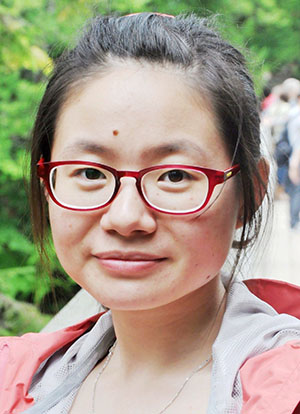Congratulations on your graduation PhD Li Xie
CONGRATULATIONS ON YOUR GRADUATION
Li Xie came to KTH in 2009 for doctoral studies after receiving a master's degree at Beijing Institute of Technology. Last week she defended her PhD thesis "Heterogeneous Integration of Silicon and Printed Electronics for Intelligent Sensing Devices" and now she feels more than ready to contribute to the industry.

Where are you from and where did you study before coming to KTH?
– I am originally from China. I received my master's degree in Beijing Institute of Technology in 2009. After that, I came to Sweden as a doctoral student at KTH School of Information and Communication Technology.
What is your topic and why did you choose it?
– My topic is Heterogeneous Integration of Silicon and Printed Electronics for Intelligent Sensing Devices. With the integration of sensors, the display and the wireless communication module, intelligent devices provide attractive and novel ways for people to interact with the objects and physical world. I chose this topic with the vision of realizing fancy stuff which may change the future life.
Describe your topic in short.
– Printed electronics means adopting traditional graphic printing technologies to print functional circuits and devices on flexible and cost-effective media such as plastics, textiles and papers. Printed electronics provide a promising solution for the low-cost high-volume production of lightweight and small, thin and flexible, inexpensive and disposable devices. However, the state-of-the-art fully printed circuits have much slower response time and lower integration density than traditional silicon chips, and therefore fully printed systems cannot fulfill the functional requirements of intelligent devices. Therefore, the heterogeneous integration system is proposed to combine the advantages of both traditional high-performance silicon chips and cost-effective printed electronics.
Tell us something about your results.
– Two prototypes are realized using the proposed integration platform. One is humidity sensing card with the application scenario of ubiquitous smart packaging for logistics or retailing. Another is a wearable bio-sensing device, named ‘Bio-Patch’, for long-term continuous ECG monitoring. It is flexible, thin, small and therefore comfortable. By attaching it on the chest, the ECG signal can be detected.
What will the future bring for your research topic?
– In the future, with the development of the material and process, the printed electronics could be highly improved in terms of cost, performance, stability, reliability, reproducibility etcetera. The intelligent devices could be commercialized and those fancy products may bring forth a revolution in daily life.
What are your plans for the future?
– I have been in school and continuously studying since I was five years old. I really want some different experiences. My plan is to join the industry and contribute to real products.
You can read the thesis Heterogeneous Integration of Silicon and Printed Electronics for Intelligent Sensing Devices by Li Xie here.

